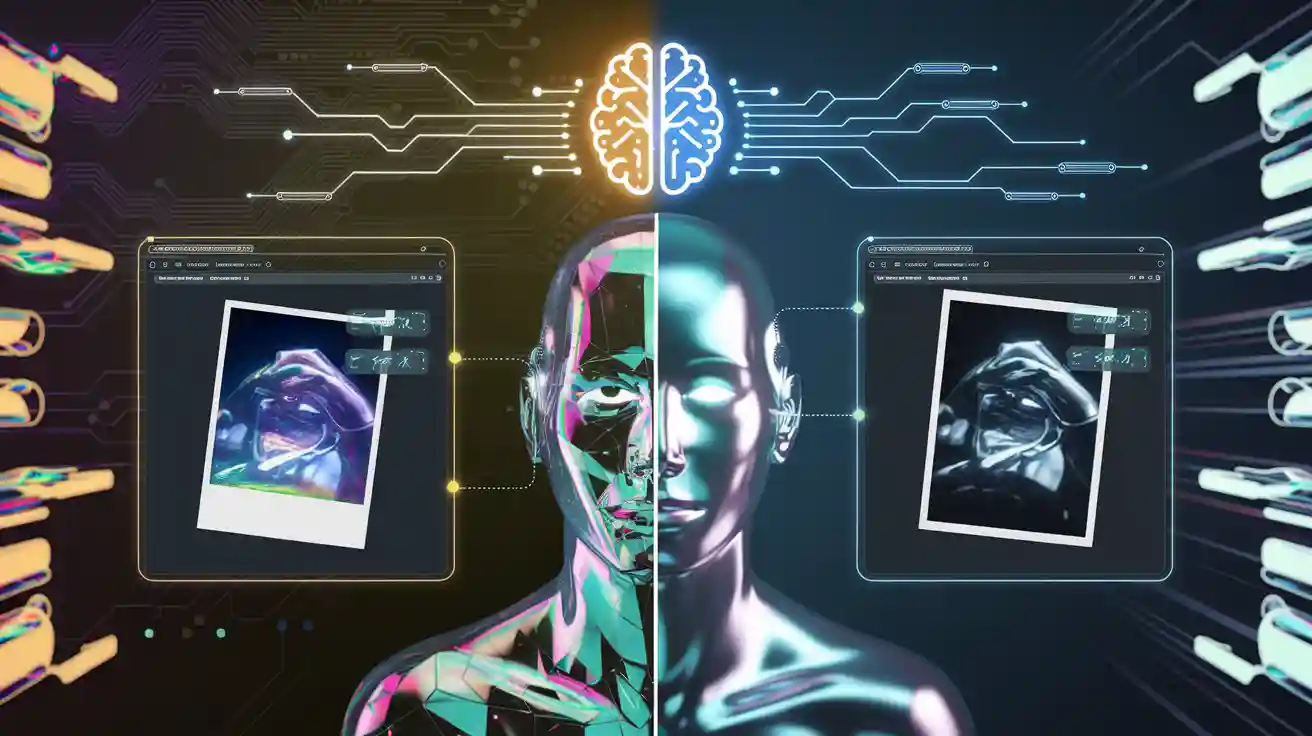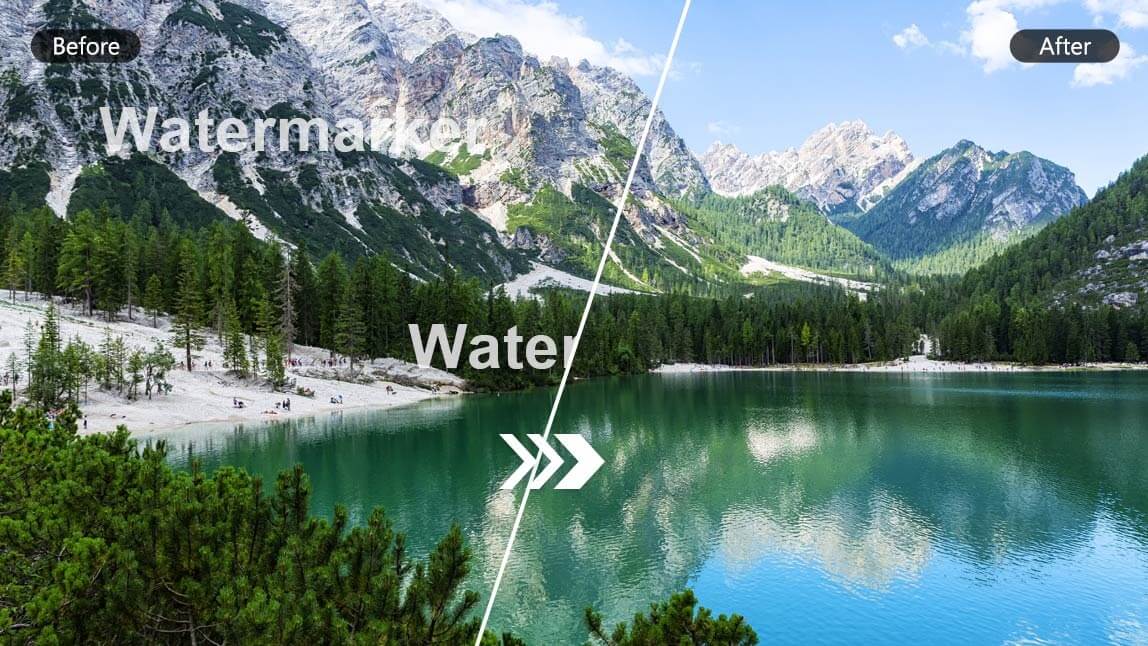Do All AI Watermark Removal Tools Deliver the Same Quality and Results?

Do all AI watermark removal tools deliver the same quality and results? The answer lies in the data and algorithms behind these tools. Some tools excel in removing watermarks, while others struggle to maintain image integrity. Several factors influence these differences, including the statistical variations in watermarked and original data:
The T-statistic shows a negative correlation with the highest ratio (-0.35).
P-values also exhibit a negative correlation (-0.31).
Watermarked data often has higher ratios and averages than original data.
These disparities highlight how algorithm sophistication and training data affect the quality of results you can expect.
Key Takeaways
Not all AI tools for removing watermarks work the same. Pick a tool based on how smart it is and its training data.
Better algorithms can remove watermarks almost perfectly, up to 99%. Use tools like WatermarkGONE for great results.
Think about why you need the tool. Professional tools focus on quality, while simpler ones are faster for everyday users.
Always use these tools responsibly. Respect creators' work and know the rules about changing images.
How easy a tool is to use also matters. Choose tools with simple designs and features like batch processing to save time.
Factors Influencing Quality
Algorithm Sophistication
The sophistication of an AI tool's algorithm plays a critical role in determining its output quality. Advanced algorithms can analyze and process images with greater precision, ensuring better quality preservation during watermark removal. Research shows that regeneration attacks using advanced AI models achieve watermark removal rates of 93-99%. In contrast, baseline attacks often fail, with less than 3% effectiveness. This highlights how advanced features in algorithms significantly enhance performance.
Sophisticated algorithms also adapt to various watermark styles, from simple text overlays to intricate patterns. They use deep learning techniques to identify and remove watermarks without compromising the image's integrity. Tools with such advanced features often deliver superior results, especially when handling complex or large-scale watermarks.
Quality and Diversity of Training Data
The quality of training data directly impacts an AI tool's ability to remove watermarks effectively. A diverse dataset ensures the tool can handle a wide range of watermark designs and image types. For example, unbiased watermarks integrated into large language models demonstrate that high-quality training data does not hinder performance. Instead, it maintains quality preservation while enabling accurate watermark tracking and removal.
When training data lacks diversity, the tool may struggle with unfamiliar watermark styles or image formats. This limitation can lead to inconsistent results. Therefore, tools trained on varied and high-quality datasets often outperform others in delivering consistent and reliable outcomes.
Intended Use Cases and Specialization
AI watermark removal tools often excel in specific use cases based on their design and specialization. Some tools focus on removing full-screen watermarks, while others specialize in handling intricate patterns embedded within images. Understanding a tool's intended purpose helps you choose one that aligns with your needs.
Specialized tools often include advanced features tailored to their focus area. For instance, a tool designed for professional photographers may prioritize quality preservation and accuracy. In contrast, a tool for casual users might emphasize speed and ease of use. Selecting a tool with the right specialization ensures you achieve the best possible results for your specific requirements.
Comparing Popular Tools
Overview of WatermarkGONE

WatermarkGONE stands out as one of the most advanced AI watermark remover tools available today. Its cutting-edge algorithms focus on preserving image quality while effectively removing watermarks. This tool excels in handling both simple and complex watermark designs, making it a preferred choice for professionals in fields like AI product photography. By leveraging sophisticated AI technology, WatermarkGONE ensures that the original image remains intact, even after watermark removal. Its user-friendly interface further enhances its appeal, allowing you to achieve professional results without requiring technical expertise.
Features of the Anonymous Tool

The anonymous tool is a very popular mobile app focusing on photo editing. It is also an AI-powered solution, while offers a more basic approach to watermark removal. It emphasizes speed and simplicity, catering to users who prioritize quick results over intricate quality preservation. This tool is particularly useful for casual users or those working with less complex images. However, its performance may falter when dealing with intricate watermarks or AI-generated product photos. Despite its limitations, the anonymous tool provides a straightforward option for users seeking a no-frills solution.
Strengths and Weaknesses of Each Tool
Each AI watermark remover tool has its strengths and weaknesses. WatermarkGONE shines in its ability to handle diverse watermark styles with precision. Its advanced algorithms ensure high-quality results, making it ideal for professionals in AI product photography. On the other hand, the anonymous tool offers speed and ease of use, which can be advantageous for users with simpler needs.
Experts note that no single tool can reliably address all watermark removal challenges due to the evolving nature of AI technology. This ongoing "arms race" between watermark removal tools and detection technologies highlights the importance of choosing a tool that aligns with your specific requirements. While WatermarkGONE excels in quality and versatility, the anonymous tool provides a faster, more accessible option for casual users.
Tip: If you prioritize quality and need a tool for professional use, WatermarkGONE is the better choice. For quick and simple tasks, the anonymous tool may suffice.
Real-World Performance

Speed and Efficiency
When evaluating AI watermark removal tools, speed plays a crucial role in determining their usability. You want a tool that processes images quickly without compromising quality. WatermarkGONE demonstrates exceptional speed of processing, making it ideal for high-volume photo processing. Its advanced algorithms optimize workflow by reducing the time required for background removal. This ensures you can handle large batches of images efficiently.
In contrast, the anonymous tool prioritizes simplicity over speed. While it processes individual images quickly, it lacks the optimization needed for high-volume tasks. This makes it less suitable for professionals who require a streamlined workflow. Choosing a tool with a balance of speed and precision ensures you achieve high-quality output without delays.
Accuracy in Removing Full-Screen Watermarks
Precision in watermark removal becomes even more critical when dealing with full-screen watermarks. These watermarks often cover significant portions of the image, making their removal challenging. WatermarkGONE excels in this area by maintaining image quality while removing watermarks with precision. Its algorithms adapt to various watermark styles, ensuring effective background removal without leaving traces.
The anonymous tool struggles with full-screen watermarks. Its simpler algorithms often fail to preserve the original image quality, leading to noticeable artifacts. For tasks requiring precision in watermark removal, WatermarkGONE offers a more reliable solution. This makes it the preferred choice for users who prioritize quality and accuracy.
Handling Complex Image Watermarks
Complex image watermarks, such as intricate patterns or overlapping designs, test the limits of AI tools. WatermarkGONE handles these challenges effectively, thanks to its advanced enhancement techniques. It uses deep learning to analyze and reconstruct images, ensuring high-quality output even in difficult scenarios.
To illustrate how AI tools perform with complex watermarks, consider the following methodologies:
Methodology | Description | Performance |
|---|---|---|
Designed for large hole image inpainting, improves learning and performance for complex structures. | Top-performing in handling extensive masks. | |
WavePaint | Utilizes 2D-Discrete Wavelet Transform to reduce computational overhead while enhancing feature extraction. | More effective than traditional CNN methods. |
These innovative approaches highlight the importance of enhancement in achieving precision in watermark removal. WatermarkGONE incorporates similar techniques, ensuring it delivers consistent results. The anonymous tool, however, lacks the sophistication needed for such tasks. For complex watermarks, you need a tool that combines precision and advanced enhancement capabilities.
User Experience and Accessibility
User experience plays a vital role in determining how effectively you can use an AI watermark removal tool. A well-designed interface ensures you can navigate the tool effortlessly, even if you lack technical expertise. WatermarkGONE, for example, offers a clean and intuitive layout that simplifies the process of removing watermarks. You can upload an image, select the watermark area, and let the tool handle the rest with remarkable precision.
Accessibility features also enhance usability. Tools that support multiple languages or offer tutorials cater to a broader audience. WatermarkGONE includes step-by-step guides, ensuring you understand how to achieve the best results. This focus on accessibility makes it easier for you to remove watermarks without compromising the quality of the image.
Another critical factor is device compatibility. Many tools, including WatermarkGONE, work seamlessly across devices. Whether you use a desktop, tablet, or smartphone, you can access the tool and remove watermarks with the same level of precision. This flexibility ensures you can work on your images anytime, anywhere.
Batch processing is another feature that improves user experience. If you need to process multiple images, tools like WatermarkGONE allow you to do so efficiently. This saves time and ensures consistent precision across all your images. In contrast, tools without batch processing may require you to handle each image individually, which can be time-consuming.
Ultimately, a tool that prioritizes user experience and accessibility ensures you can focus on achieving high-quality results. By choosing a tool with these features, you can remove watermarks with ease and precision, regardless of your technical skill level.
Ethical and Legal Considerations
Ethical Implications of Removing Watermarks
Removing watermarks raises important ethical questions. You might unintentionally devalue creative works by erasing the identifiers that protect them. Experts emphasize that this practice can harm creators by reducing the perceived worth of their content. For instance, removing watermarks from ecommerce product images could lead to unauthorized use, undermining the original creator's efforts. This misuse also risks spreading misinformation, as altered images may lose their authenticity.
Ethical guidelines are essential to address these challenges. Transparency about the capabilities of AI watermark removal tools can help users make informed decisions. Clear ethical frameworks should prioritize authenticity and discourage misuse. By understanding these implications, you can use these tools responsibly while respecting the work of others.
Legal Boundaries and Copyright Issues
The legal landscape surrounding watermark removal is complex. Copyright laws often protect watermarked images, and removing these marks can lead to infringement. For example, ecommerce platforms rely on watermarks to safeguard product preservation and ownership. When these marks are removed, it becomes harder to trace the original creator, raising questions about attribution and trademark protection.
Legal experts highlight several key issues:
Copyright uncertainty: Ownership of AI-generated content remains unclear.
Cross-border enforcement: Different countries have varying copyright laws, complicating regulation.
Data protection: Aligning watermarking practices with privacy laws like GDPR is challenging.
Description | |
|---|---|
Copyright Uncertainty | Ownership of AI-generated content remains unclear. |
Cross-Border Enforcement | Varying laws across countries complicate regulation. |
Data Protection | Aligning watermarking with privacy laws like GDPR is difficult. |
Educating yourself about these legal boundaries can help you avoid unintentional violations. Transparency and compliance with copyright laws ensure responsible use of AI tools.
Responsible Use of AI Watermark Removal Tools
Using AI watermark removal tools responsibly requires a balanced approach. Transparency plays a crucial role. Open discussions about the limitations and capabilities of these tools can foster trust. Education is equally important. By promoting media literacy, you can better discern authentic content and avoid spreading manipulated images.
Collaboration among stakeholders is another key consideration. Engaging creators, policymakers, and users can lead to more ethical practices. For example, ecommerce platforms can work with creators to ensure product preservation while respecting intellectual property rights.
Description | |
|---|---|
Transparency | Open discussions about the capabilities and limitations of AI watermark removal are essential. |
Education | Promoting media literacy and critical thinking helps users discern authentic content. |
Collaboration | Engaging stakeholders, including creators and policymakers, is crucial for responsible usage. |
By adopting these practices, you can use AI tools in a way that respects both ethical and legal standards. Responsible use not only protects creators but also ensures the quality and authenticity of digital content.
AI watermark removal tools deliver varying levels of quality and results. Differences in algorithm design, training data, and specialization significantly impact their performance. Tools like WatermarkGONE excel in removing full-screen and complex watermarks while maintaining image integrity. In contrast, simpler tools may prioritize speed but struggle with intricate designs.
When choosing a tool, consider your specific needs. If you value precision and quality, opt for a tool designed for professional use. For quick and straightforward tasks, simpler tools may suffice. Always prioritize ethical use to respect creators' rights and ensure the authenticity of digital content.
FAQ
What makes AI watermark removal tools different from each other?
AI watermark removal tools differ in their algorithm design, training data, and intended use cases. Some tools focus on speed, while others prioritize precision. The quality of the image after removal depends on these factors, making it essential to choose a tool that matches your needs.
Can AI tools remove watermarks from all types of images?
Not all AI tools can handle every type of image. Simple watermarks are easier to remove, but complex patterns or full-screen watermarks require advanced algorithms. Tools like WatermarkGONE excel in maintaining image quality during removal, even for intricate designs.
Is it legal to use AI for watermark removal?
The legality of using AI for watermark removal depends on the context. Removing watermarks from copyrighted images without permission may violate copyright laws. Always ensure you have the right to modify an image before using such tools.
How do AI tools maintain image quality during watermark removal?
AI tools use advanced algorithms to analyze the image and reconstruct the background where the watermark was removed. High-quality tools rely on diverse training data to ensure the image remains intact and visually appealing after the watermark is gone.
Are AI watermark removal tools easy to use?
Most AI watermark removal tools are user-friendly. They often feature intuitive interfaces where you upload an image, select the watermark, and let the tool handle the rest. Tools like WatermarkGONE also offer tutorials to guide you through the process.
See Also
Five Best Online Resources for Erasing Watermarks in 2025
Common Errors To Steer Clear Of When Erasing Watermarks
Ways To Eliminate Watermarks From Images Without Any Programs
Advice For Erasing Watermarks From Getty Stock Photos
Comprehensive Guide To Eliminating Logos From Product Images

